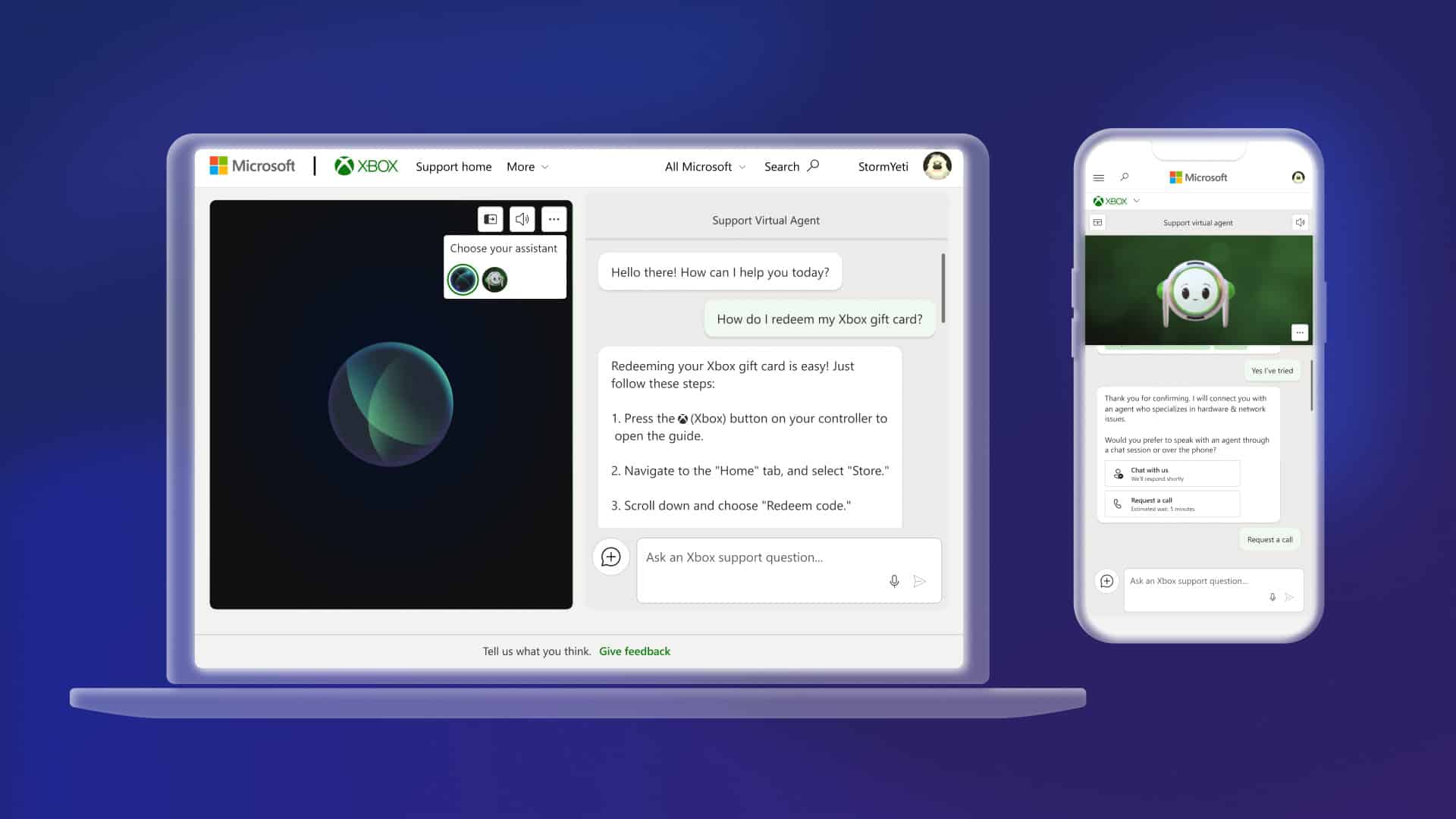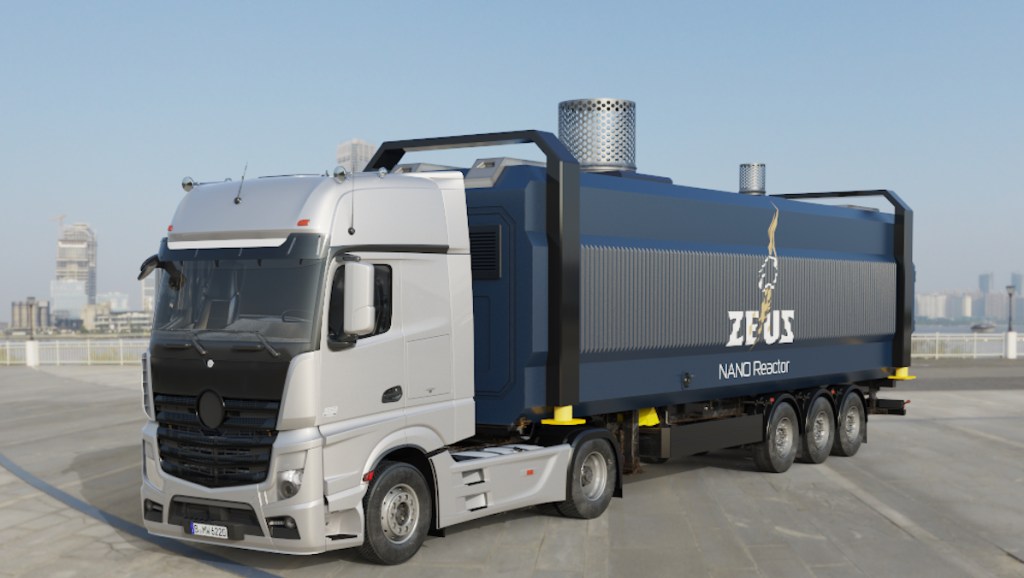Technology
UC San Diego, Tsinghua University researchers just made AI way better at knowing when to ask for help

Join our daily and weekly newsletters for the latest updates and exclusive content on industry-leading AI coverage. Learn More
A team of computer scientists has developed a method that helps artificial intelligence understand when to use tools versus relying on built-in knowledge, mimicking how human experts solve complex problems.
The research from the University of California San Diego and Tsinghua University demonstrates a 28% improvement in accuracy when AI systems learn to balance internal knowledge with external tools — a critical capability for deploying AI in scientific work.
How scientists taught AI to make better decisions
“While integrating LLMs with tools can increase reliability, this approach typically results in over-reliance on tools, diminishing the model’s ability to solve simple problems through basic reasoning,” the researchers write in their paper. “In contrast, human experts first assess problem complexity using domain knowledge before choosing an appropriate solution approach.”
The new method, called “Adapting While Learning,” uses a two-step process to train AI systems. First, the model learns directly from solutions generated using external tools, helping it internalize domain knowledge. Then, it learns to categorize problems as either “easy” or “hard” and decides whether to use tools accordingly.

Small AI model outperforms larger systems on complex tasks
What makes this development significant is its efficiency-first approach. Using a language model with just 8 billion parameters — far smaller than industry giants like GPT-4 — the researchers achieved a 28.18% improvement in answer accuracy and a 13.89% increase in tool usage precision across their test datasets. The model demonstrated particular strength in specialized scientific tasks, outperforming larger models in specific domains.
This success challenges a fundamental assumption in AI development: that bigger models necessarily yield better results. Instead, the research suggests that teaching AI when to use tools versus rely on internal knowledge — much like training a junior scientist to know when to trust their calculations versus consult specialized equipment — may be more important than raw computational power.

The rise of smaller, smarter AI models
This research aligns with a broader industry shift toward more efficient AI models in 2024. Major players including Hugging Face, Nvidia, OpenAI, Meta, Anthropic, and H2O.ai have all released smaller but highly capable models this year.
Hugging Face’s SmolLM2, with versions as small as 135 million parameters, can run directly on smartphones. H2O.ai’s compact document analysis models have outperformed tech giants’ larger systems on specialized tasks. Even OpenAI entered the small model arena with GPT-4o Mini, offering similar capabilities at a fraction of the cost.
This trend toward “AI downsizing” reflects growing recognition that bigger isn’t always better — specialized, efficient models can often match or exceed the performance of their larger counterparts while using far fewer computational resources.
The technical approach involves two distinct learning phases. During training, the model first undergoes what the researchers call “World Knowledge Distillation” (WKD), where it learns from solutions generated using external tools. This helps it build up internal expertise.
The second phase, “Tool Usage Adaptation” (TUA), teaches the system to classify problems based on its own confidence and accuracy in solving them directly. For simpler problems, it maintains the same approach as in WKD. But for more challenging problems, it learns to switch to using external tools.
Business impact: More efficient AI systems for complex scientific work
For enterprises deploying AI systems, this research addresses a fundamental challenge that has long plagued the industry. Current AI systems represent two extremes: they either constantly reach for external tools — driving up computational costs and slowing down simple operations — or dangerously attempt to solve everything internally, leading to potential errors on complex problems that require specialized tools.
This inefficiency isn’t just a technical issue — it’s a significant business problem. Companies implementing AI solutions often find themselves paying premium prices for cloud computing resources to run external tools, even for basic tasks their AI should handle internally. On the flip side, organizations that opt for standalone AI systems risk costly mistakes when these systems attempt complex calculations without proper verification tools.
The researchers’ approach offers a promising middle ground. By teaching AI to make human-like decisions about when to use tools, organizations could potentially reduce their computational costs while maintaining or even improving accuracy. This is particularly valuable in fields like scientific research, financial modeling, or medical diagnosis, where both efficiency and precision are crucial.
Moreover, this development suggests a future where AI systems could be more cost-effective and reliable partners in scientific work, capable of making nuanced decisions about when to leverage external resources — much like a seasoned professional who knows exactly when to consult specialized tools versus rely on their expertise.
The power of knowing when to ask for help
Beyond the immediate technical achievements, this research challenges the bigger-is-better paradigm that has dominated AI development. In demonstrating that a relatively small model can outperform its larger cousins by making smarter decisions about tool use, the team points toward a more sustainable and practical future for AI.
The implications extend far beyond academic research. As AI increasingly enters domains where mistakes carry real consequences – from medical diagnosis to climate modeling – the ability to know when to seek help becomes crucial. This work suggests a future where AI systems won’t just be powerful, but prudent – knowing their limitations just as skilled professionals do.
In essence, the researchers have taught AI something fundamentally human: sometimes the smartest decision is knowing when to ask for help.
Source link
Technology
India on target to achieve 500 GW renewable energy target- The Week

India will set up 50 solar parks across the country with a total capacity of around 37GW and have identified 30GW worth potential offshore wind energy sites as a part of the Modi government’s mission of achieving a 500 GW renewable energy target by 2030.
The news was announced by India’s New and Renewable Energy minister Prahlad Joshi at the International Solar Energy (ISA) assembly going on in Delhi. The international event is attended by delegates from 96 out of the 120 members, with 29 nations sending their energy ministers.
Joshi incidentally was elected president of the ISA for the next two years, along with co-president France. ISA is a global agency that works with governments to improve energy access and energy security worldwide and promote solar power as a sustainable transition to a carbon-neutral future. ISA’s mission is to unlock US$1 trillion of investments in solar by 2030 alongside achieving 1,000 GW of installed capacity in renewable energy. This, even while reducing the cost of the technology and its financing.
It promotes the use of solar energy in the agriculture, health, transport, and power generation sectors. ISA was launched mainly due to the initiatives of France and India, who are incidentally, the present co-presidents.
For India, the motive of the international organisation aligns well with its own domestic efforts, with renewable energy, especially solar, achieving tremendous growth. India is estimated to be inching close to the 100 GW mark in solar power generation alone.
“Our journey in renewables is one of vision and progress,” Joshi said at the inaugural session of the ISA Assembly. This year’s union budget increased the funding for solar projects by more than 100%, with new schemes like the PM Surya Char Muft Bijli Yojana and tax exemptions on import of critical minerals used in the new energy lifecycle.
ISA, despite being a new international body, has already achieved global acclaim for its projects like the Solar Data Portal, a platform that delivers real-time data on solar resources, project performance, and investment opportunities across countries, as well as the Global Solar Facility aims to unlock commercial capital for solar projects in underserved regions, especially Africa.
In addition, ISA’s SolarX Startup Challenge has successfully identified and supported innovative, scalable solutions for the solar sector in Asia, Africa and the Pacific region, with the next edition of the challenge scheduled to be held soon aimed at Latin America.
Technology
Meta’s plan for nuke-powered AI data center thwarted by bees


The humble bumblebee has played a part in obstructing an ambitious construction project by Meta, according to a Financial Times (FT) report.
The Mark Zuckerberg-led tech giant has apparently had to abandon a plan to build a nuclear-powered AI data center partly because a rare bee species has been found on the land where the facility would’ve been built.
Meta, like other tech behemoths such as Google, Amazon, and Microsoft, is looking to harness nuclear power to run its new energy-hungry data centers that are being built to propel their AI plans.
The FT said that Meta was hoping to partner with an existing operator of a nuclear energy facility for a new plant that would help to power its proposed data center, but that “multiple complications including environmental and regulatory challenges” have forced the tech company to think again.
Intent on seeing the project through, Meta is believed to still be considering various deals for carbon-free energy that would involve construction work in a different location, presumably one without any rare bees buzzing around nearby.
Processing data for generative-AI products requires enormous amounts of energy, prompting major tech firms to ink deals with nuclear power companies to supply their needs cleanly and efficiently.
Google announced just last month that it had inked a deal with nuclear energy startup Kairos Power to purchase 500 megawatts of “new 24/7 carbon-free power” from seven of the company’s small modular reactors (SMRs), with initial delivery from the first SMR expected in 2030 followed by a full rollout by 2035.
“The grid needs new electricity sources to support AI technologies that are powering major scientific advances, improving services for businesses and customers, and driving national competitiveness and economic growth,” Michael Terrell, Google’s senior director of Energy and Climate, wrote in a blog post announcing the deal. “This agreement helps accelerate a new technology to meet energy needs cleanly and reliably, and unlock the full potential of AI for everyone.”
Additionally, Microsoft announced in September that it’s working to restart a unit at New York’s Three Mile Island as part of a plan to power its own AI data centers.
Technology
The new Xbox AI chatbot is here to help with support issues

The rise of AI continues to work its way into more industries and the latest on Microsoft’s front is an AI chatbot for Xbox that you can now test. The AI chatbot was initially discovered earlier this year and it now looks like the company is beginning to roll it out to users. Though it’s only a specific group of users for now.
The company hasn’t said when it will roll the feature out fully but it is reportedly testing the waters to prepare for future AI features coming to Xbox consoles. As reported by The Verge, Microsoft plans to integrate AI features with Xbox down the road. And the new AI chatbot appears to be part of Microsoft’s larger plan for AI integration with the Xbox platform.

Xbox Insiders can now test the AI Chatbot for support services
Officially called the ‘Support Virtual Agent,’ the new AI chatbot is available for Xbox Insiders beginning today. You’ll need to be an Insider to access the new AI support assistant, and if you fall into that category you can get to the tool from Microsoft’s Xbox Support page. Microsoft says Support Virtual Agent can answer questions about Xbox console and game support issues.
For example, if you don’t know how to redeem an Xbox gift card, the Support Virtual Agent will be able to tell you how to do that. You could also presumably ask it anything else pertaining to an issue you’re having with the Xbox platform. Say a game isn’t working and you need help fixing that, or you need assistance with a purchase.
After you sign into the support page with the same account you used for the Xbox Insider Program, you’ll get a pop-up about using the Support Virtual Agent after clicking the “ask a question” button, Microsoft says. From there simply type in the box what you want to ask and the tool will hand you AI-generated responses to best assist you with the issue you’re having.

Support Virtual Agent has two customization options
Microsoft doesn’t really make it clear if it will keep the customization feature, but for the testing period with Insiders during the preview, there are two customization options for the virtual agent. One is an Xbox orb featuring green and blue hues. The other is an animated robot head. It appears as if you can swap between these whenever you want. So at least during the preview, you can seemingly flip back and forth as you see fit.
Technology
Sony announces more than 50 enhanced games available for PS5 Pro at launch

The PlayStation 5 Pro is nearly here, as it hits retailers on November 7. If you’ve been on the fence about dropping a cool $700 , Sony just published a that will offer enhanced versions when the console launches later this week.
This list includes modern favorites like Baldur’s Gate 3, The Last of Us Part II Remastered, Marvel’s Spider-Man 2 and God of War Ragnarök. It also features newer games like NBA2K 25 and Dragon Age: The Veilguard. All told, it’s a pretty decent start. The console will unlock all kinds of graphical enhancements, like advanced ray tracing, higher frame rates and Sony’s proprietary upscaling system called PlayStation Spectral Super Resolution.
However, it’s also worth pointing out some games that aren’t on the list. Gran Turismo 7 is missing, despite an enhanced version already being announced. It must not be ready yet. Final Fantasy XVI is also absent from the list, and that one has . The same goes for both Returnal and Elden Ring. Now, just because these games aren’t on the launch list, doesn’t mean they won’t get enhanced versions down the line. It probably depends on .
The PS5 Pro offers more than just slight graphical upgrades to pre-existing titles. It boasts faster memory, support for Wi-Fi 7 and ships with a large 2TB SSD. Digital Foundry and also found 2GB of additional DDR5 RAM and a user-accessible battery bay. These are all nifty upgrades, though I’m still not sure if all of this adds up to me spending $700.
Science & Environment
Oil giant Saudi Aramco posts 15% drop in third-quarter profit but maintains dividend
Saudi Aramco’s Ras Tanura oil refinery and oil terminal
Ahmed Jadallah | Reuters
Saudi state oil giant Aramco reported a 15.4% drop in net profit in the third-quarter on the back of “lower crude oil prices and weakening refining margins,” but maintained a 31.05 billion dividend.
This is a breaking news story. Please refresh for updates.
Technology
Geopolitical tensions and energy independence: Is NANO Nuclear the answer?

In the debate over energy, the effect on climate is certainly important, but so is the impact of geopolitical tensions on energy availability. Some experts believe nuclear energy offers a path toward energy independence, but public perception and exorbitant licensing costs have gotten in the way. NANO Nuclear Energy is hoping to change that.
NANO Nuclear Energy adds a new level of convenience to nuclear energy — it’s currently developing portable, on-demand nuclear reactors for remote locations. It’s also aiming to fabricate and deliver nuclear fuel and offer consulting services for those in the nuclear industry.
NANO’s founder Jay Yu believes that, in many ways, nuclear power is the future of energy — and energy independence in particular. He notes that recent events have alerted more people than ever to the importance of the domestic creation of nuclear power. And James Walker, NANO’s CEO, agrees.
“The war in Ukraine set off a chain reaction affecting global energy dynamics, particularly in the realm of nuclear energy,” mentions Walker. “Before the conflict, the United States sourced a significant portion of its nuclear material from Russia. However, the onset of the war in Ukraine disrupted these arrangements, as geopolitical tensions escalated and sanctions against Russia were implemented.”
“This upheaval meant that the U.S. and other western countries could no longer rely on Russian nuclear material, prompting a need to find alternative sources to meet their domestic nuclear fuel requirements,” he continues. “This disruption underscored the vulnerabilities in supply chains and the strategic importance of energy independence.”
Energy sovereignty is a critical part of maintaining a country’s independence, so naturally, there’s an increasing interest in expanding nuclear power in the United States.
However, Walker notes that would-be innovators face significant challenges.
“Nuclear power in the U.S. is one of the most expensive in the world,” he says. “It is often said that nuclear power is cheap, but the paperwork is expensive. That creates a large upfront capital cost, which then requires a lot of financing. The financing cost can be a big portion of the entire project cost.”
With that kind of capital requirement, it’s no wonder nuclear energy hasn’t proliferated as much as proponents would like. But now, a new law — known as the Advanced Nuclear Technology Development Act (ADVANCE Act) — is aiming to loosen existing restrictions.
This act, which was signed into law in July, proposes a reform of the current Nuclear Regulatory Commission review process, the implementation of incentives for nuclear developers, the promotion of public-private development partnerships. It also aims to provide support for designers of advanced reactors.
The incentives offered through the act — much like the tax credits and incentives that came with solar power a few years ago — will undoubtedly lead to faster, more advanced innovation in the field.
“Grants, tax credits, loan guarantees will alleviate the financial burden on nuclear developers,” Walker says. “These incentives aim to lower the capital costs and make financing more accessible and affordable.”
Lowering financial barriers is certainly a large part of what the law is trying to do. However, Walker explains the ADVANCE Act’s inclusion of public-private partnerships is another way to boost the nation’s innovation potential.
“The act promotes collaboration between the federal government, industry, other stakeholders to leverage resources and expertise,” he says. “This approach is intended to drive innovation and reduce the financial risks associated with nuclear projects.”
Of course, there’s another less quantifiable barrier to be mindful of — public perception. Unfortunately, when many people think of nuclear power, their minds go straight to some of the world’s most infamous nuclear power plant disasters.
“The public perception is that it is dangerous and dirty,” Walker says. “Public perception has led politics, which have impeded nuclear from being expanded.”
Walker notes that nuclear power is not nearly the hazard many make it out to be.
“The difference between public perception and reality is enormous,” he says. “If deaths/GWh are examined, nuclear power is safer than even wind and solar. It also generates the least amount of waste and is carbon-free energy.”
The signing into law of the ADVANCE Act, could help dispel some of the negative sentiment surrounding nuclear power and even usher in a whole new era of green energy. And because the ADVANCE Act’s goals are so aligned with those of NANO Nuclear, it just might open up a new era for Walker’s company, too.
“The law’s emphasis on advanced reactors aligns with Nano Nuclear Energy’s focus on innovative, portable microreactor technology,” he says. “Support for research, development, demonstration projects under the act can accelerate the advancement of our microreactor designs. They’re going to be safer, faster, more market-ready.”
VentureBeat newsroom and editorial staff were not involved in the creation of this content.
-

 Science & Environment2 months ago
Science & Environment2 months agoHow to unsnarl a tangle of threads, according to physics
-

 Technology1 month ago
Technology1 month agoIs sharing your smartphone PIN part of a healthy relationship?
-

 Science & Environment2 months ago
Science & Environment2 months ago‘Running of the bulls’ festival crowds move like charged particles
-

 Science & Environment2 months ago
Science & Environment2 months agoHyperelastic gel is one of the stretchiest materials known to science
-

 Technology2 months ago
Technology2 months agoWould-be reality TV contestants ‘not looking real’
-

 Science & Environment1 month ago
Science & Environment1 month agoX-rays reveal half-billion-year-old insect ancestor
-

 Science & Environment2 months ago
Science & Environment2 months agoMaxwell’s demon charges quantum batteries inside of a quantum computer
-

 Science & Environment2 months ago
Science & Environment2 months agoSunlight-trapping device can generate temperatures over 1000°C
-

 Money1 month ago
Money1 month agoWetherspoons issues update on closures – see the full list of five still at risk and 26 gone for good
-

 Technology1 month ago
Technology1 month agoGmail gets redesigned summary cards with more data & features
-

 Science & Environment2 months ago
Science & Environment2 months agoPhysicists have worked out how to melt any material
-

 Sport1 month ago
Sport1 month agoAaron Ramsdale: Southampton goalkeeper left Arsenal for more game time
-

 Football1 month ago
Football1 month agoRangers & Celtic ready for first SWPL derby showdown
-

 Sport1 month ago
Sport1 month agoBoxing: World champion Nick Ball set for Liverpool homecoming against Ronny Rios
-

 Technology1 month ago
Technology1 month agoUkraine is using AI to manage the removal of Russian landmines
-

 Technology1 month ago
Technology1 month agoEpic Games CEO Tim Sweeney renews blast at ‘gatekeeper’ platform owners
-

 News1 month ago
News1 month agoWoman who died of cancer ‘was misdiagnosed on phone call with GP’
-

 MMA1 month ago
MMA1 month ago‘Dirt decision’: Conor McGregor, pros react to Jose Aldo’s razor-thin loss at UFC 307
-

 Science & Environment2 months ago
Science & Environment2 months agoLaser helps turn an electron into a coil of mass and charge
-

 Technology1 month ago
Technology1 month agoRussia is building ground-based kamikaze robots out of old hoverboards
-

 Science & Environment2 months ago
Science & Environment2 months agoQuantum ‘supersolid’ matter stirred using magnets
-

 Science & Environment2 months ago
Science & Environment2 months agoLiquid crystals could improve quantum communication devices
-

 MMA1 month ago
MMA1 month agoDana White’s Contender Series 74 recap, analysis, winner grades
-

 News1 month ago
News1 month ago‘Blacks for Trump’ and Pennsylvania progressives play for undecided voters
-

 Technology1 month ago
Technology1 month agoSamsung Passkeys will work with Samsung’s smart home devices
-

 Science & Environment2 months ago
Science & Environment2 months agoA new kind of experiment at the Large Hadron Collider could unravel quantum reality
-
Business1 month ago
how UniCredit built its Commerzbank stake
-

 MMA4 weeks ago
MMA4 weeks ago‘Uncrowned queen’ Kayla Harrison tastes blood, wants UFC title run
-

 Technology1 month ago
Technology1 month agoMicrosoft just dropped Drasi, and it could change how we handle big data
-

 Science & Environment2 months ago
Science & Environment2 months agoWhy this is a golden age for life to thrive across the universe
-

 News1 month ago
News1 month agoRwanda restricts funeral sizes following outbreak
-

 Technology1 month ago
Technology1 month agoCheck, Remote, and Gusto discuss the future of work at Disrupt 2024
-

 News1 month ago
News1 month agoNavigating the News Void: Opportunities for Revitalization
-

 TV1 month ago
TV1 month agoসারাদেশে দিনব্যাপী বৃষ্টির পূর্বাভাস; সমুদ্রবন্দরে ৩ নম্বর সংকেত | Weather Today | Jamuna TV
-

 MMA1 month ago
MMA1 month agoPereira vs. Rountree prediction: Champ chases legend status
-

 Sport1 month ago
Sport1 month ago2024 ICC Women’s T20 World Cup: Pakistan beat Sri Lanka
-

 Entertainment1 month ago
Entertainment1 month agoBruce Springsteen endorses Harris, calls Trump “most dangerous candidate for president in my lifetime”
-

 Technology1 month ago
Technology1 month agoWhy Machines Learn: A clever primer makes sense of what makes AI possible
-

 News1 month ago
News1 month agoCornell is about to deport a student over Palestine activism
-

 News1 month ago
News1 month agoMassive blasts in Beirut after renewed Israeli air strikes
-

 Business1 month ago
Business1 month agoWhen to tip and when not to tip
-

 Technology1 month ago
Technology1 month agoMicrophone made of atom-thick graphene could be used in smartphones
-

 Business1 month ago
Business1 month agoWater companies ‘failing to address customers’ concerns’
-

 Sport1 month ago
Sport1 month agoWXV1: Canada 21-8 Ireland – Hosts make it two wins from two
-

 Football1 month ago
Football1 month ago'Rangers outclassed and outplayed as Hearts stop rot'
-

 Science & Environment2 months ago
Science & Environment2 months agoQuantum forces used to automatically assemble tiny device
-

 Science & Environment2 months ago
Science & Environment2 months agoITER: Is the world’s biggest fusion experiment dead after new delay to 2035?
-

 News2 months ago
News2 months ago▶️ Hamas in the West Bank: Rising Support and Deadly Attacks You Might Not Know About
-

 Science & Environment2 months ago
Science & Environment2 months agoNuclear fusion experiment overcomes two key operating hurdles
-

 Sport1 month ago
Sport1 month agoChina Open: Carlos Alcaraz recovers to beat Jannik Sinner in dramatic final
-

 Football1 month ago
Football1 month agoWhy does Prince William support Aston Villa?
-

 MMA1 month ago
MMA1 month agoKayla Harrison gets involved in nasty war of words with Julianna Pena and Ketlen Vieira
-

 News1 month ago
News1 month ago▶ Hamas Spent $1B on Tunnels Instead of Investing in a Future for Gaza’s People
-
Business1 month ago
Top shale boss says US ‘unusually vulnerable’ to Middle East oil shock
-

 Technology1 month ago
Technology1 month agoMusk faces SEC questions over X takeover
-

 Technology1 month ago
Technology1 month agoSingleStore’s BryteFlow acquisition targets data integration
-

 News1 month ago
News1 month agoHull KR 10-8 Warrington Wolves – Robins reach first Super League Grand Final
-

 Sport1 month ago
Sport1 month agoPremiership Women’s Rugby: Exeter Chiefs boss unhappy with WXV clash
-

 Science & Environment2 months ago
Science & Environment2 months agoA slight curve helps rocks make the biggest splash
-

 Womens Workouts1 month ago
Womens Workouts1 month ago3 Day Full Body Women’s Dumbbell Only Workout
-

 Technology1 month ago
Technology1 month agoMeta has a major opportunity to win the AI hardware race
-
Business1 month ago
Bank of England warns of ‘future stress’ from hedge fund bets against US Treasuries
-

 Technology1 month ago
Technology1 month agoLG C4 OLED smart TVs hit record-low prices ahead of Prime Day
-

 MMA1 month ago
MMA1 month ago‘I was fighting on automatic pilot’ at UFC 306
-

 Sport1 month ago
Sport1 month agoShanghai Masters: Jannik Sinner and Carlos Alcaraz win openers
-

 Sport1 month ago
Sport1 month agoCoco Gauff stages superb comeback to reach China Open final
-

 News1 month ago
News1 month agoGerman Car Company Declares Bankruptcy – 200 Employees Lose Their Jobs
-

 Sport1 month ago
Sport1 month agoWales fall to second loss of WXV against Italy
-

 Technology1 month ago
Technology1 month agoUniversity examiners fail to spot ChatGPT answers in real-world test
-
Business1 month ago
DoJ accuses Donald Trump of ‘private criminal effort’ to overturn 2020 election
-
Business1 month ago
Sterling slides after Bailey says BoE could be ‘a bit more aggressive’ on rates
-

 TV1 month ago
TV1 month agoTV Patrol Express September 26, 2024
-

 Money4 weeks ago
Money4 weeks agoTiny clue on edge of £1 coin that makes it worth 2500 times its face value – do you have one lurking in your change?
-

 Sport1 month ago
Sport1 month agoSturm Graz: How Austrians ended Red Bull’s title dominance
-

 MMA1 month ago
MMA1 month agoPennington vs. Peña pick: Can ex-champ recapture title?
-

 MMA1 month ago
MMA1 month agoKetlen Vieira vs. Kayla Harrison pick, start time, odds: UFC 307
-

 Technology1 month ago
Technology1 month agoThe best shows on Max (formerly HBO Max) right now
-

 Technology1 month ago
Technology1 month agoIf you’ve ever considered smart glasses, this Amazon deal is for you
-

 Science & Environment2 months ago
Science & Environment2 months agoTime travel sci-fi novel is a rip-roaringly good thought experiment
-

 Science & Environment2 months ago
Science & Environment2 months agoNerve fibres in the brain could generate quantum entanglement
-

 Technology1 month ago
Technology1 month agoJ.B. Hunt and UP.Labs launch venture lab to build logistics startups
-

 Technology1 month ago
Technology1 month agoQuoroom acquires Investory to scale up its capital-raising platform for startups
-
Business1 month ago
The search for Japan’s ‘lost’ art
-

 Sport1 month ago
Sport1 month agoNew Zealand v England in WXV: Black Ferns not ‘invincible’ before game
-

 Sport1 month ago
Sport1 month agoMan City ask for Premier League season to be DELAYED as Pep Guardiola escalates fixture pile-up row
-

 Technology1 month ago
Technology1 month agoAmazon’s Ring just doubled the price of its alarm monitoring service for grandfathered customers
-
Travel1 month ago
World of Hyatt welcomes iconic lifestyle brand in latest partnership
-

 News1 month ago
News1 month agoTrump returns to Pennsylvania for rally at site of assassination attempt
-

 News2 months ago
News2 months ago▶️ Media Bias: How They Spin Attack on Hezbollah and Ignore the Reality
-

 Science & Environment2 months ago
Science & Environment2 months agoHow to wrap your mind around the real multiverse
-

 Business1 month ago
Business1 month agoStocks Tumble in Japan After Party’s Election of New Prime Minister
-

 Technology1 month ago
Technology1 month agoTexas is suing TikTok for allegedly violating its new child privacy law
-

 Technology1 month ago
Technology1 month agoOpenAI secured more billions, but there’s still capital left for other startups
-
Business1 month ago
‘Let’s be more normal’ — and rival Tory strategies
-

 News1 month ago
News1 month agoFamily plans to honor hurricane victim using logs from fallen tree that killed him
-

 Money1 month ago
Money1 month agoPub selling Britain’s ‘CHEAPEST’ pints for just £2.60 – but you’ll have to follow super-strict rules to get in
-

 Sport1 month ago
Sport1 month agoURC: Munster 23-0 Ospreys – hosts enjoy second win of season
-

 Entertainment1 month ago
Entertainment1 month agoNew documentary explores actor Christopher Reeve’s life and legacy
-

 Technology4 weeks ago
Technology4 weeks agoThe FBI secretly created an Ethereum token to investigate crypto fraud
-

 MMA1 month ago
MMA1 month agoHow to watch Salt Lake City title fights, lineup, odds, more

You must be logged in to post a comment Login